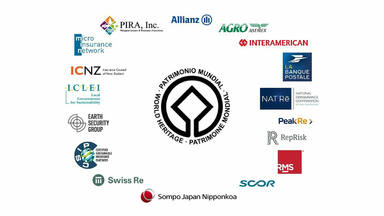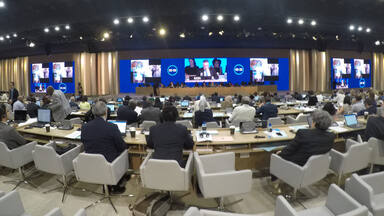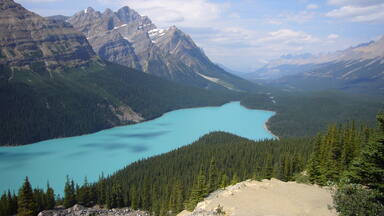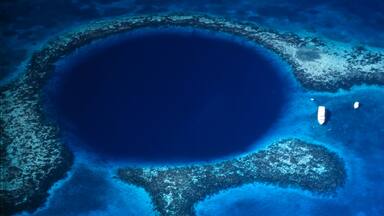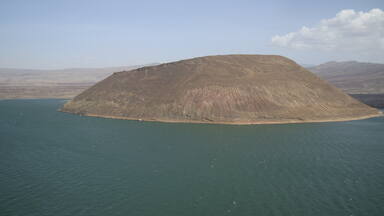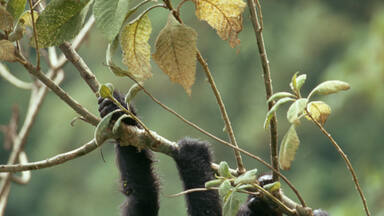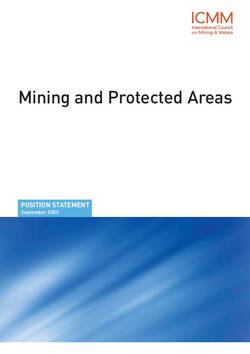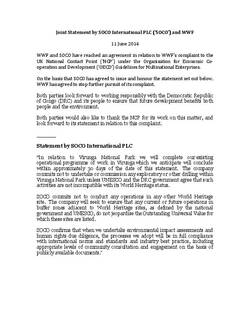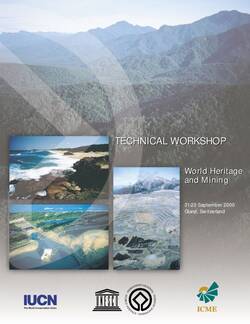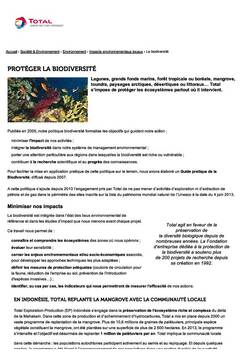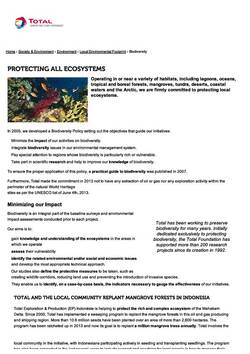
Over the years, and based on the many cases which have arisen at natural World Heritage properties, the World Heritage Committee has expressed many times its clear position that that mineral, oil and gas exploration or exploitation is incompatible with the World Heritage status, and that such activities should not be undertaken within World Heritage properties. It is, in any case, essential that the Outstanding Universal Value of a World Heritage property is not impacted.
Indeed, the adverse impact of extractive activities on World Heritage properties has been a growing concern at natural and mixed World Heritage properties. This concern has also emerged in some cultural properties in the recent years.
Since 1993, the threat represented by extractive industries has globally been on the increase. As recorded through the monitoring of the state of conservation of World Heritage properties for examination by the World Heritage Committee, there have been 411 reports on 79 World Heritage properties in 47 States Parties concerning mining, oil or gas, or quarrying issues over the past 30 years (1984-2015) (source: World Heritage State of conservation Information System).
Globally, mining, oil and gas (exploration and/or exploitation) now stand as the 7th most important factor affecting the properties reported on during the Wold Heritage Committee sessions. In 2015 only, of the 141 reported properties, 18% were affected by mining, oil and gas activities (see Document WHC-15/39.COM/7), out of which 12 properties are inscribed on the List of World Heritage in Danger. More specifically, the state of conservation reports presented in 2015 showed that 84% of the properties affected by mining, oil and gas activities are natural and mixed properties. More detailed statistics can be found at the following webpage https://whc.unesco.org/en/soc.
According to the state of conservation reports, the increasing trend of properties threatened by planned or existing mining as well as oil and gas exploration and exploitation projects appears to be especially notable with regard to natural properties in Africa (see Document WHC-11/35.COM/7B). In addition to extractive operations, related oil and gas pipelines, toxic waste and shipping routes can also be potential threats to World Heritage properties.
Context
In 1998, due to growing concern, the World Heritage Centre, IUCN and ICOMOS started discussing the issue of extractive industries and their impact on “protected areas and other ecologically sensitive sites” with the International Council of Metals and the Environment (ICME; which became the International Council on Mining and Metals - ICMM in 2001).
The same year, based on discussions of specific cases at its 22nd session (Kyoto, 1998), the establishment of an informal contact group on mining and World Heritage sites during the annual sessions of the Committee was recommended. This issue was subsequently presented to the World Heritage Committee at its 23rd session (Marrakesh, 1999).
In its Decision 23 COM X.C.48-61, adopted at its 23rd session in 1999, the World Heritage Committee requested the World Heritage Centre to cooperate with, inter alia, the Advisory Bodies, UN agencies, other concerned agencies and representatives from interested States Parties to the World Heritage Convention and representatives of the mining industry, in order to organize a technical meeting on World Heritage and Mining in 2000.
A World Heritage and Mining technical workshop, organized by IUCN, ICME and the World Heritage Centre, took place at IUCN Headquarters, Gland, Switzerland, from 20-23 September 2000. The workshop included representatives from the mining and conservation sectors as well as World Heritage site managers and protected area agencies from States Parties.
This same year, the World Heritage Committee discussed the issue of World Heritage and Mining, and noted the recommendations of the workshop referred to above (Decision 24 COM VIII).
A major milestone was achieved in 2003, with the adoption by the ICMM of a commitment (also known as the “No-go commitment”) by which all ICMM member companies committed to:
- "Respect legally designated protected areas
- Not explore or mine in World Heritage properties. All possible steps will be taken to ensure that existing operations in World Heritage properties as well as existing and future operations adjacent to World Heritage properties are not incompatible with the Outstanding Universal Value for which these properties are listed and do not put the integrity of these properties at risk
- Through ICMM, work with IUCN – The World Conservation Union – to address application issues and to strengthen the IUCN system of protected area categorisation. ICMM recognizes that sufficient reform of this system will lead to recognition of categories of protected areas as ‘No-go’ areas and others with a multiple-use designation
- Through ICMM, work with IUCN, governments, intergovernmental organizations, development and conservation NGOs and others to develop transparent, inclusive, informed and equitable decision-making processes and assessment tools that better integrate biodiversity conservation, protected areas and mining into land-use planning and management strategies, including ‘No-go’ areas
- Through ICMM, work with IUCN and others in developing best practice guidance to enhance industry’s contribution to biodiversity conservation, including in and around protected areas."
UNESCO welcomed this commitment made by the ICMM and Shell to abstain from any exploration or extractive activity in World Heritage properties.
UNESCO’s action and additional Commitments
However, besides the numerous debates held at the World Heritage Committee level and the adoption of this “No-go commitment”, the percentage of properties affected by extractive industries has continued to gradually increased since 2005, demonstrating the need for more companies to add their voices to this commitment and pledge not to have any extraction of oil or gas nor any exploration activity within the perimeter of World Heritage properties.
This led the World Heritage Committee to adopt Decision 37 COM 7 (Part III) at its 37th session in 2013, urging all States Parties to the World Heritage Convention and the leading industry stakeholders, to respect the ICMM “No-go” commitment by not permitting extractives activities within World Heritage properties, and by making every effort to ensure that extractives companies located in their territory cause no damage to World Heritage properties, in line with Article 6 of the Convention.
In June 2013, following the repeated appeals in 2012 and 2013 by the World Heritage Committee to several oil companies with concessions infringing on the Virunga National Park (Democratic Republic of Congo) to steer clear of World Heritage properties, the French-based oil and gas corporation TOTAL also pledged that it will refrain from prospecting or exploiting oil and gas in natural sites as per the UNESCO World Heritage List of 4 June 2013.
In March 2014, HSBC announced a new policy on World Heritage properties and Ramsar wetland sites.
In June 2014, the firm SOCO also agreed not to undertake or commission any exploratory or other drilling within Virunga National Park (Democratic Republic of the Congo), unless UNESCO and the DRC Government agree that such activities are not incompatible with its World Heritage Status. It also ensure that any current of future operations in buffer zones adjacent to World Heritage sites do not jeopardize the Outstanding Universal Value for which these sites are listed.
In November 2015, the new commitment by British company TULLOW OIL PLC to remain out of World Heritage sites was welcomed. The firm had received a licence to explore for oil in an area overlapping Kenya’s World Heritage-listed Lake Turkana National Parks, which had led the World Heritage Committee to appeal to it in 2012 and 2013 to subscribe to “No-go commitment”, following joint advice by UNESCO and IUCN.
Furthermore, certain investment banks are also adopting specific policies concerning their investments related to World Heritage properties (see Document WHC-14/38.COM/7).
A positive recent example at State Party level is the decision by the Belize government in December 2015 to approve a policy that will legally ban offshore exploration in all seven areas that make up the Belize Barrier Reef Reserve System World Heritage area is therefore an important step forward.
These are just a few of the new pledges to the “No-go” commitment. In line with the Decision adopted by the World Heritage Committee in 2013, the dialogue initiated in 1998 between the World Heritage Centre, the Advisory Bodies and ICMM continues in order to extend this commitment to other companies and parts of the industry, and to also ensure that existing and future operations in areas surrounding World Heritage properties are compatible with the protection of their Outstanding Universal Value and do not threaten their integrity.
Relevant webpages on World Heritage and Extractive Industries
- UNESCO Information System on the state of conservation of World Heritage properties: List of state of conservation reports on properties affected by mining, oil and gas exploration/exploitation since 1979
- ICMM No-Go Commitment (2003)
- IUCN Advice Note on mining (2013)
- Report of the technical workshop on “World Heritage and Mining”, IUCN Headquarters, Gland, Switzerland (21-23 September 2000)
- International Petroleum Industry Environmental Conservation Association (IPIECA)
Literature
- Matea Osti, Lauren Coad, Joshua B. Fisher et al., (2011). Oil and gas development in the World Heritage and wider protected area network in sub-Saharan Africa. Biodiversity and Conservation, 20 (9), 1863-1877.
- Rössler, M. : Mining and World Heritage considerations. In: Industry and Environment. Special Issue “Mining and sustainable development II. Challenges and perspectives”. Volume 23, No. 1, 2000. 88-90.
- Rössler, M., Sheppard, D. Phillips A., Itzkovitch I. and S. Houston: World Heritage and Mining. Workshop leads to Establishment of Working Group. In: ICME Newsletter. Volume 8, No. 4, 2000. 5-6.
- Rössler, M. and G. Debonnet: The World Heritage Convention. In: Integrating Mining and Biodiversity Conservation. Case studies from around the world. IUCN, ICMM, Gland 2004, 4.
- Turner, S.D., World Heritage sites and the extractive industries. Independent study commissioned by IUCN in conjunction with the UNESCO World Heritage Centre, ICMM and Shell, 2012.
- United Nations Environment Programme World Conservation Monitoring Centre (UNEP-WCMC), Identifying Potential Overlap between Extractive Industries (Mining, Oil and Gas) and Natural World Heritage Sites, 2013.
Documents
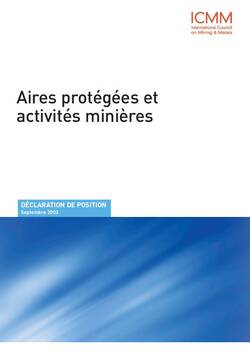 ICMM - Déclaration de posiition sur les aires portégées et les activités minières - Septembre 2003 .pdf
ICMM - Déclaration de posiition sur les aires portégées et les activités minières - Septembre 2003 .pdf
 Mapping the Oil and Gas industry to the Sustainable Development Goals: an Atlas, IPIECA, October 2017 .pdf
Mapping the Oil and Gas industry to the Sustainable Development Goals: an Atlas, IPIECA, October 2017 .pdf


